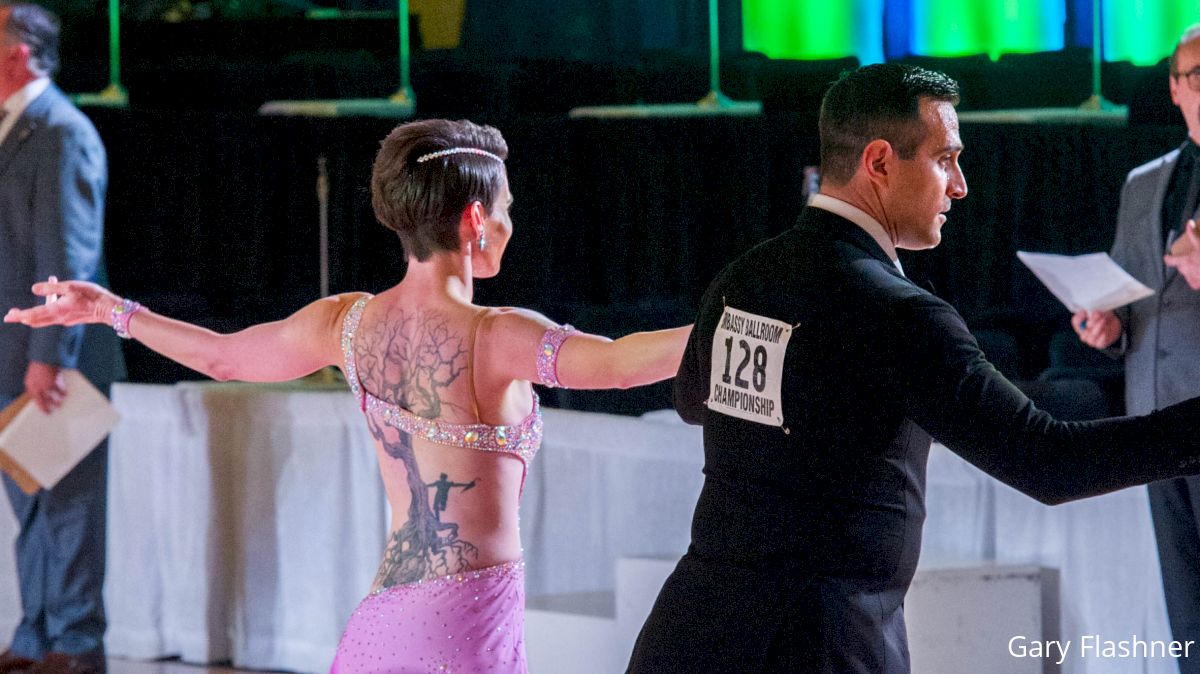What To Do When You Look Different On The Dance Floor
What To Do When You Look Different On The Dance Floor
There is certainly an ideal look in the world of dancesport. So what can you do when you don't fit that mold?

Imagine two women are dancing in the same heat at a dancesport competition. Both demonstrate equal knowledge of their steps, timing, technique, etc. Both are wearing sparkly dresses and beautiful makeup. One of them happens to weigh 80 pounds more than the other. Who do you think will place first?
When you enter the world of dancesport, you quickly learn that there is a very subjective side to competition. You need to do more to prepare than just rehearse your routines and remember your technique. There is a “look” that you’re told you need to aim for, including the right dress, hair and makeup, and even skin tone (I caused a bit of a ruckus when I first decided to not spray tan).
At some point along the evolutionary journey of dancesport, an ideal dancer look developed. Of course, this dancer looked polished, grabbed attention, and demonstrated expert knowledge and skill in dance. This dancer was also thin, smooth skinned, and considered physically beautiful by societal standards.
This look can mess with your head if you’re heavier, wear your art (i.e., tattoos), or were just born with a different face than the magazine models. Even sporting an alternative haircut, i.e., shaved or extra short for a woman, may make you wonder. If you compete and don’t place well, is it because the other competitors danced better than you or is it because they came closer to fitting that “ideal” look?
Since getting my tree tattoo done, I always wear backless dresses at competitions so I can show it off. Despite initial warnings from my teacher, it hasn’t seemed to have had a negative impact so far. I have still placed well at nearly every competition I attend. Although I am always curious about the one judge who would mark me in fifth or sixth place while everyone else was ranking me first or second. Did that one judge happen to look at me when I made that one big mistake? Or did they write me off as soon as I turned my back to them?
Another dancer recently shared her experience as a heavier dancer. Similar to my experience, her weight didn’t seem to make a difference at the smaller local and regional competitions she attended. She always placed well, but when she went to a larger, national competition, she was shocked when she placed much lower than usual. Was it because she didn’t fit the right look, or did she just come up against more talented dancers whom she hadn’t encountered before?
It doesn’t matter.
What I mean by that is if you’re a competitive dancer who doesn’t look like all of the other dancers on the floor, how heavily your appearance is factoring into your results is not worth your time and energy because it’s out of your control. You can’t control the judges’ opinions of you.
The only chance you have of making your appearance not matter to the judges is by making it not matter to you first. If you walk out on the dance floor self-conscious about how you look compared to the other dancers, your body language will reflect that uncomfortable feeling that you’re not sure you belong. The judges pick up on that. Your discomfort makes them uncomfortable, even if they’re not sure why, and it will distract them away from your dancing.
When you go out on that floor, you have to do so knowing you belong there and in full ownership of who you are as a dancer. You are not there for the judges’ acceptance or validation. You are there to show them what you can do. When you don’t question if you belong, they don’t feel the need to question it either. Your confidence will convey the message, “I am a great dancer.” A much better message than, “I’m not sure,” don’t you think?
This mindset shift won’t guarantee you first place, but it will help quiet the questioning about what played into your results. As long as you know you owned your piece of that floor and danced your best, nothing else will matter.